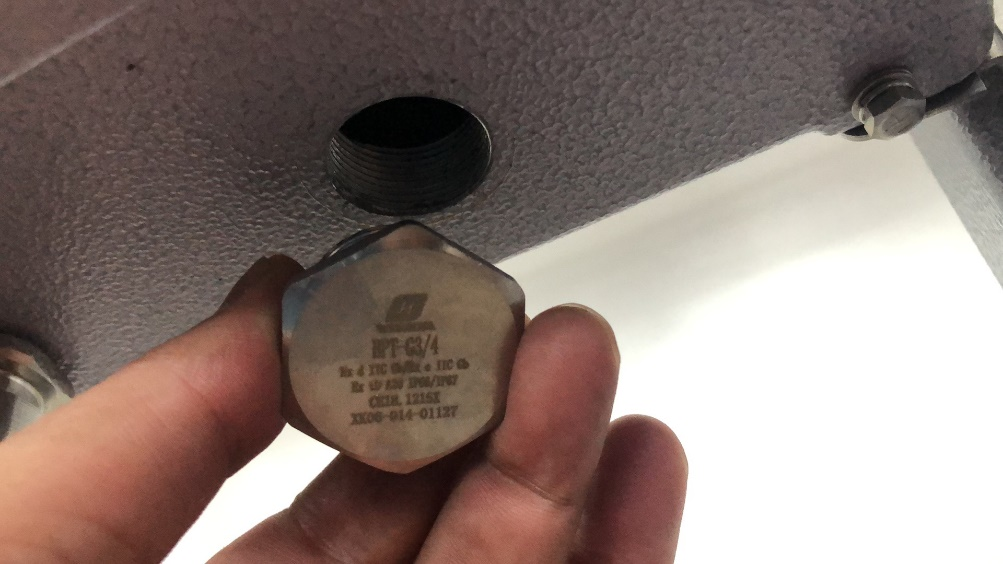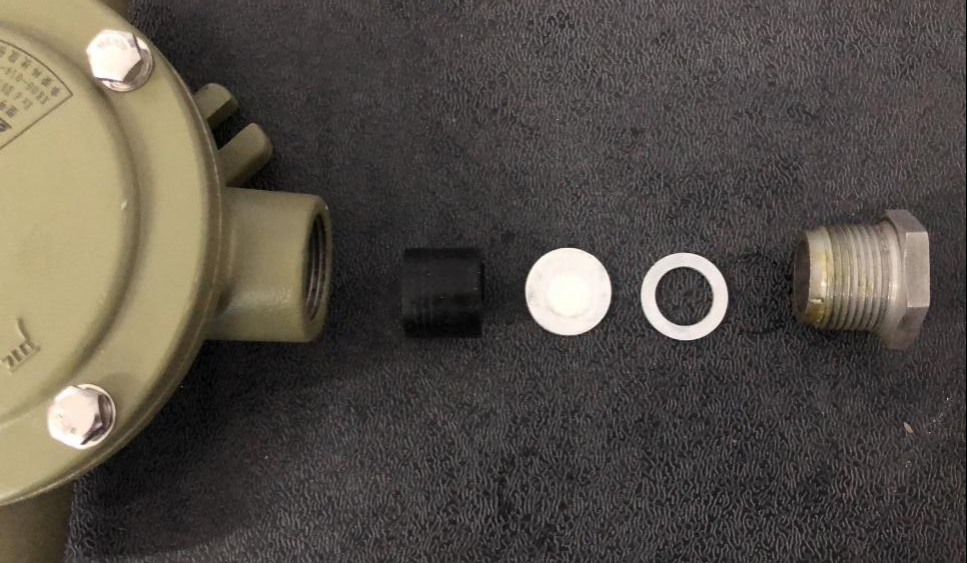Explosion-proof plugging parts related knowledge
In the fire and explosion hazardous areas of chemical enterprises, the use of explosion-proof electrical equipment is a common practice in order to effectively control the sparks generated by electrical equipment, to avoid the surrounding leakage of combustible gases into the electrical equipment inside the flash explosion accident.
General requirements for main components of explosion-proof equipment
I. Fasteners
1. Fasteners should have sufficient mechanical strength not to cause bolt breakage when the shell explodes.
2, fasteners should be anti-rust, anti-loosening measures to ensure that the clearance of the plane type explosion-proof joint surface.
3、When fastening with bolts, if spring washers are used to prevent loosening, just flatten the spring washers, and they should not be tightened too much.
4. In order to avoid shearing of the fastening bolts by external forces, the outer dimensions of the cover and shell joints must be the same.
5, in order to fasten securely, the material of bolts and nuts are not allowed to use plastic or light alloy, and are not allowed to tap screw holes directly on the plastic shell.
6, the depth of impermeable screw holes should ensure that the bolt and screw holes after tightening, there shall be more than 2 times the thickness of the lockwasher thread margin.
7. The thickness around and at the bottom of the impermeable screw hole shall be not less than one-third of the diameter of the bolt, but with a margin of at least 3.0 mm.
8, process with through-hole or structure must penetrate the shell of the screw holes, should be cylindrical or threaded explosion-proof structure to plug it, the exposed end shall be permanently fixed.
II. Plugs
With the official release of the 2021 version of GB/T3836 standard, GB/T 3836.2-2021 enriches the requirements for Ex blocking parts, and the differences with GB 3836.2-2010 are as follows:
1.GB 3836.2-2010 Article 11 for “fasteners, related holes and blocking parts”, GB/T 3836.2-2021 in the 11 removed the blocking parts, in 13.8 separate provisions of the requirements of the blocking parts, and blocking parts of the structural requirements of the C2.3.1 article.
2.GB/T 3836.2-2021 Appendix C.2.3 according to its structural characteristics will be divided into metric Ex plugging parts, NPT Ex plugging parts and non-threaded Ex plugging parts clear requirements, the specific content is as follows:
(1) Metric Ex blocking members shall meet the following requirements in order to address the introduction of holes into the housing by keeping the outer surface of the blocking member as close to the housing as possible:
a. Shall have flanges or hollow knives to prevent the Ex blocking member from passing completely through the housing, and where flanges are present, shall be of a diameter and thickness to prevent removal by means other than those permitted above;
b. Threads shall conform to the corresponding requirements in Explosion-proof joints (C.2.2).
(2) NPT Ex blocking members shall meet the following requirements:
a. Shall be free of flanges;
b. Thread types shall conform to ANSI/ASME B1.20.1 American Standard Tapered Pipe Threads (NPT);
c. There should be grooves for tools (as in Figure C.2);
d. The effective thread length shall not be less than dimension “L2”.
(3) Non-threaded Ex plugs (Type I only)
Only for Class I equipment, the light hole (non-threaded hole) blocking parts shall meet the requirements of C.2.2.2 and C.2.3.1 in GB/T3836.2-2021.
Special attention should be paid:
(1) Plugs should not be used with threaded fittings.
(2) NPT threaded plugs should not be designed with a flanged construction.
Commonly used explosion-proof electrical equipment is not used in the introduction of plugging methods
Flame-proof electrical equipment is not used in the introduction of the mouth, according to its introduction of the structure of the entrance to determine the blocking method, the following is commonly used for flame-proof electrical equipment is not used in the introduction of the mouth of the blocking method, briefly analyze and explain.
National standard GB/T 3836.1-2021 Article 16.4 “blocking parts” is stipulated as follows: used to block the redundant holes in the wall of the shell of the electrical equipment blocking parts, should be in line with the requirements of the corresponding special explosion-proof type.
Usually, the structure of the introduction port of the explosion-proof electrical equipment is divided into two cases:
1. There is a sealing ring type cable introduction device on the explosion-proof enclosure, which adopts the sealing ring to clamp the cable sheath;
2. The introduction port on the explosion-proof enclosure is an explosion-proof threaded through-hole, which needs to be sealed with a suitable explosion-proof plug.
First of all, the practice of the first case, “Cable introduction device with sealing ring on the explosion-proof enclosure“, is shown in Figure 1 below:
The structure of this kind of introduction port is to produce deformation of the seal ring by squeezing the seal ring through the compression element at the forefront of the equipment, so that the seal ring reliably clamps the cable sheath to realize the explosion-proof performance, and there is no structure of the explosion-proof surface. In this case the blocking method is carried out, its excess cable introduction port on the outside of the sealing ring should be provided with a steel plug/plugging plate, the thickness of the plugging plate should not be less than 2mm, the steel plugging plate should be pressed by the compression element, as shown in Figure 1.
In the second case, the “through-hole in the explosion-proof housing” is shown in Figure 2 below:
In this case, the introduction port on the explosion-proof shell is a through-hole for explosion-proof threads, which needs to be blocked with a suitable explosion-proof plug. It should be noted that the first to determine the thread type, such as, is the NPT thread or M thread, or other permissible thread type, and then according to the thread type selection of suitable explosion-proof plugging, this plugging method is through the threaded interface to achieve the performance of the explosion-proof, must also meet the following conditions:

Pitch ≥ 0.7mm, generally not more than 2mm;
Engaged threads ≥ 5 buckles;
Depth of engagement: ≥5mm when the volume of the device is ≤100cm3, or, ≥8mm when the volume of the device is >100cm3;
Engagement accuracy: Intermediate or precision tolerance level according to GB/T 197 and GB/T 2516, 6H/6g is recommended.



